The history of Tea (green tea)

A Japanese monk who went to China during the Era of Heian (794 - ) learned how to use Tea, brought it back to Japan, and presented it to the Emperor. This is considered as the beginning of the history of Tea in Japan. Tea was used in various ways; those in power used it in order to show off their authority or to feel peaceful. Noble men and samurai were expected to have knowledge of Tea. It is in the Edo period (1963-) that we began to easily have Tea like nowadays. Through the knowledge that Tea is good for the health and the modernization of production, the custom of taking Tea gradually spread out.
The production of Tea
The growth and the quality of Tea are strongly influenced by the climate, the precipitation and the difference of temperature during a day. There are more than 50 kinds of Tea, but Yabukita occupies 75 % of production. The leaves collected during the first picking (sprout) at the end of April are soft and tasty, and are considered as high quality Tea. Leaves are picked every 40 days. The later they are collected, the less tasty they become. During the Era of Taisho (1912-) most of the leaves were picked with fingers but nowadays everything is mechanized. Only the Tea leaves of the best quality are taken manually.
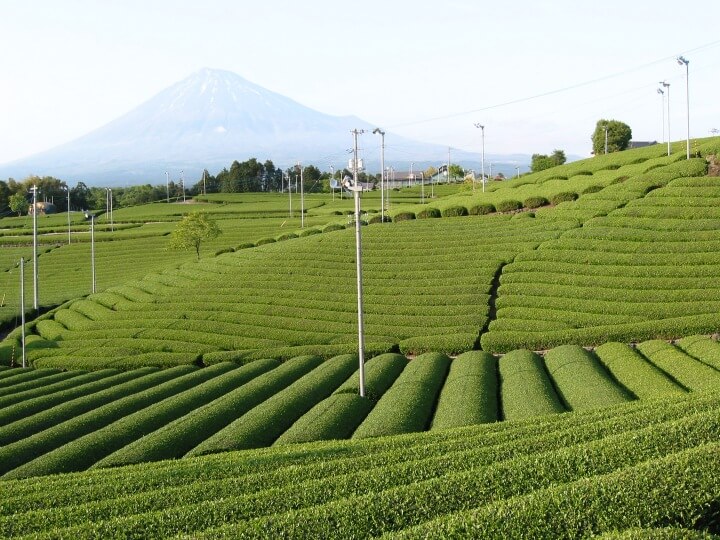
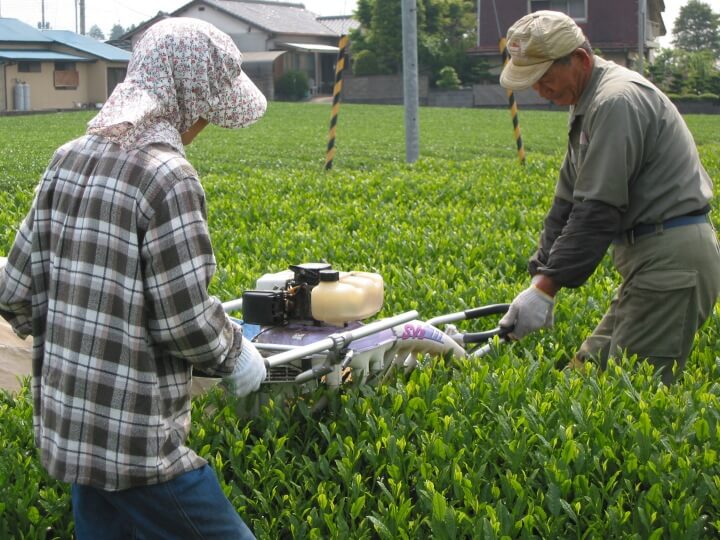
The processing of Tea
The picked Tea leaves ferment naturally because of various enzymes that they possess, and therefore, the components change. A heat treatment to stop this fermentation is necessary. It is possible to boil, roast (fry), steam the leaves and so on. Usually, Japanese Tea is steamed so that its green color becomes vivid and its natural taste is left properly. Afterwards, Tea is rubbed, twisted, dried, sorted and blended.


Water to make good Tea

There are two kinds of water: hard water and soft water. They are distinguished by their calcium and magnesium ion content. Soft water is suitable for Tea. Japanese water is soft water, but each country and each area have different waters. In case you make Tea with mineral water, it is advisable to use water containing an ion concentration of 10-50 mg/L.
The preservation of Tea
Tea easily deteriorates in quality under the influence of oxygen, humidity, temperature and light. Therefore it is better to put small quantities in an airtight container and to keep it in a refrigerator. Make sure that you leave the Tea out of the refrigerator for a while before opening it so that it does not change in quality because of the abrupt difference of temperature.
How to prepare Tea
I. Sencha (green tea)
- Pour boiling water in your teacup
- Prepare Tea leaves
- Pour water and let the Tea infuse
- Pour Tea into the cups
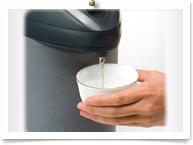
It is to pre-heat your cup and cool off the temperature of the boiling water. The best temperature is 70-90 ℃ to mellow the astringency and extract the real taste.
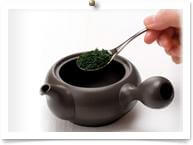
The amount should be 2-3 g for each cup.
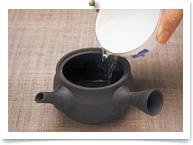
Insert the Tea leaves in the teapot, pour water and let the Tea infuse for 1 minute. Pour the exact quantity of water.

To serve several cups of Tea, pour a little into each cup alternately so that the richer Tea at the bottom of the pot is distributed evenly between all cups. Empty all the Tea from the teapot into the cups so that the taste of Tea does not remain in the teapot.
II. Hojicha (roasted tea) and Genmaicha(tea combined with roasted rice)
- Prepare Tea leaves
- Pour water and let the Tea infuse
- Pour Tea into the cups
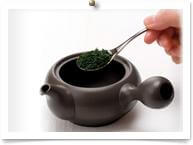
The amount should be 3-4 g for each cup.
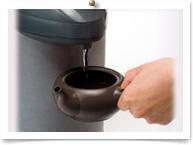
Hojicha and genmaicha have less astringency so boiling water can be used. It is better to use hot water of more than 90 degrees in order to enjoy its scent.
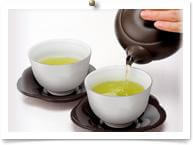
To serve several cups of Tea pour a little into each cup alternately so the richer Tea at the bottom of the pot is distributed evenly between all cups. Empty all the Tea from the teapot into the cups so that the taste of Tea does not remain in the teapot.
